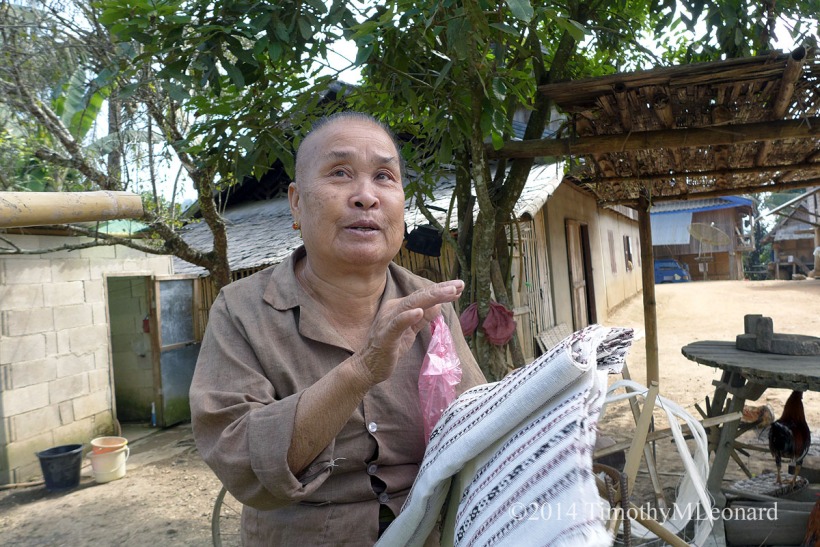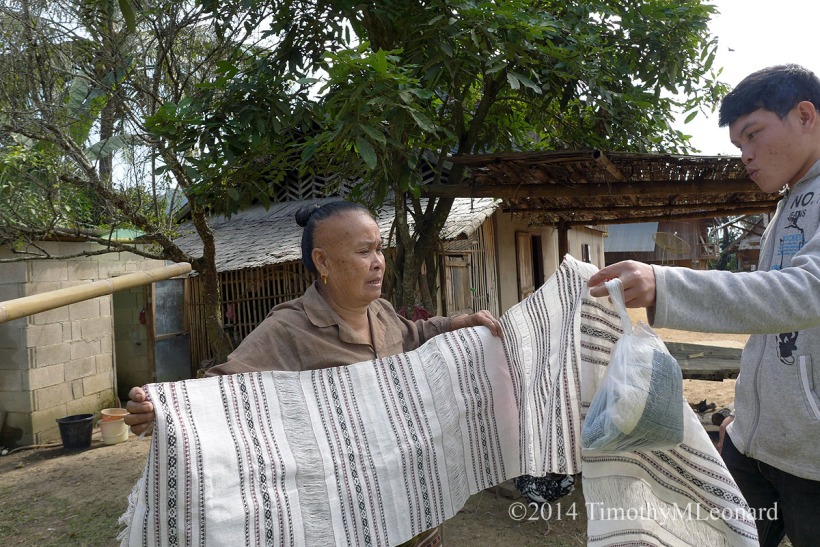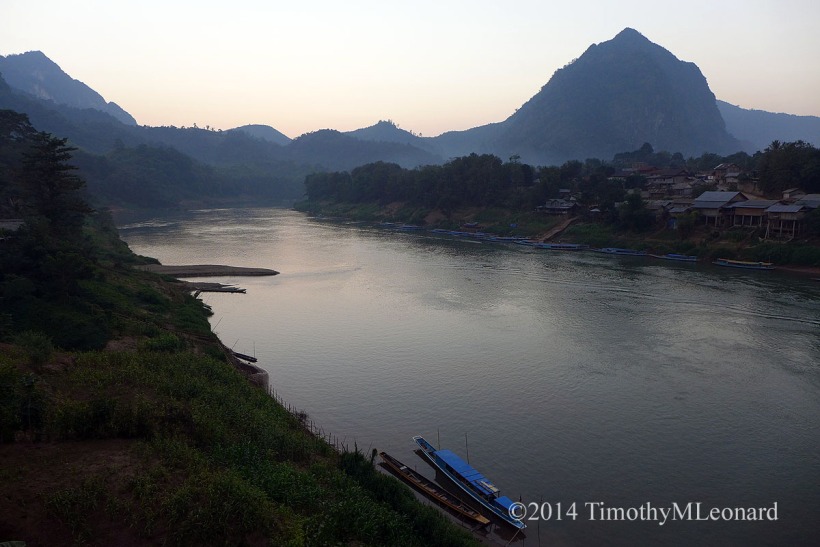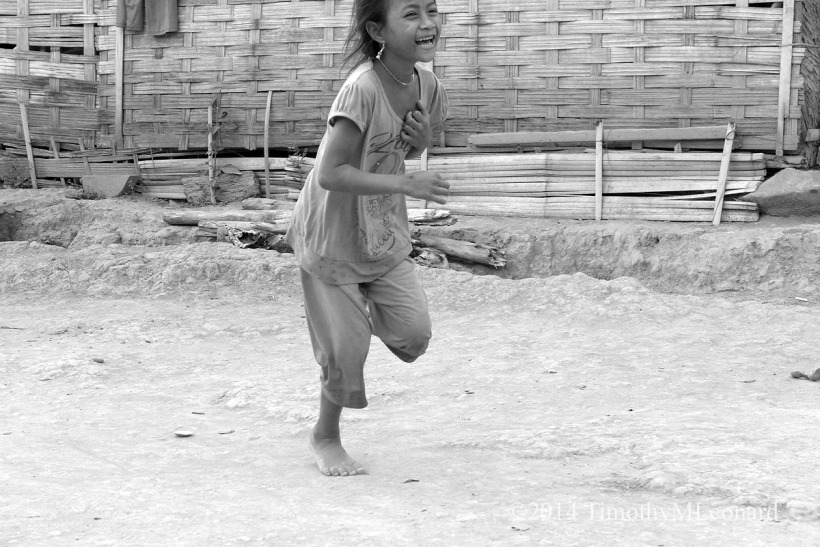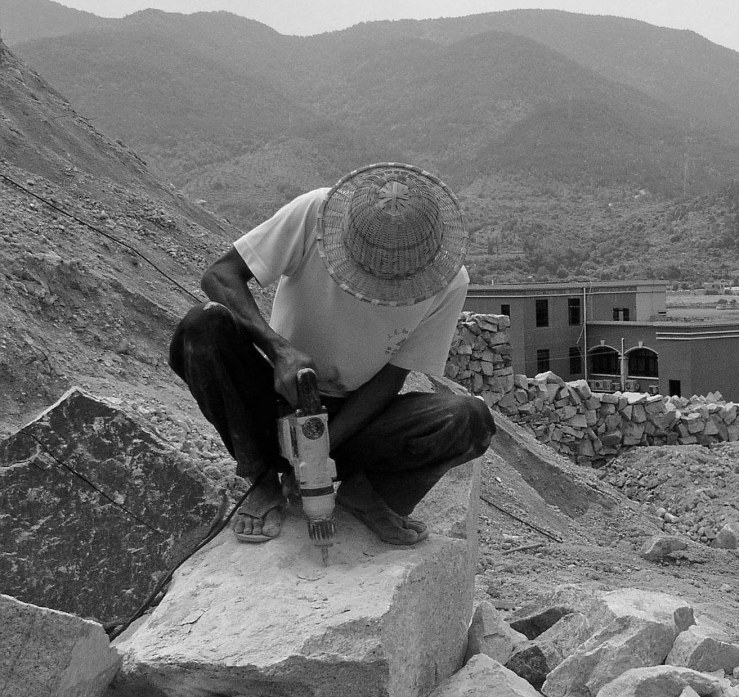Sidi Ifni, Morocco
It was high noon.
He yelled out, “Sidi Ifni.”
The lot director deserted his friends in the shade of a solitary tree gesturing to a battered car in the throng of vehicles. The “grand taxi” in the hot, dry, dusty sand choked Tiznit parking lot was an old blue and yellow Benz. Dreaming drivers waited for passengers.
“Thanks.”
The driver was crashed in the back.
Knowing it might be hours, days, weeks, months, years, or centuries until they had a full load, he wandered off for bottled water and bananas. Yellow peels raised dust as he released skin from a fresh skeleton. Locals did not eat bananas in public and he wasn’t interested in dietary protocol.
They departed Tiznit when the car was full of smiling toothless Berbers returning to stone homes far away. They zoomed through barren scrub desert past rocky hills and distant menacing adobe fortresses.
He sat smashed between the window and a friendly French speaking young Gendarme en route to his garrison in Sidi Ifni. The gendarme protected a worn crumpled green canvas satchel.
It was empty - however - the stories inside were real.
It’d survived invasions, standing orders, foreign legions, armed bandits and salt and slave caravans moving north across the Sahara returning south with gold. It held letters to mistresses locked in harems, declarations of intrigue, suspense, tension, conflict, and treaties.
It revealed bilingual conversations about moral ambiguities between characters in comedies and dramas. It divulged wild tales about distant mirages, instruction manuals for training hunting falcons, intentions, motivations, meditations, aqueduct plans, mosaic fountain designs, and extensive agricultural necessities inside tiled adobe fortresses on hilltop positions overlooking a vast emptiness of silence.
The gendarme dozed off and the stranger peeked into the bag of tricks.
It contained irrefutable empirical evidence.
Dear Commanding Officer of the Garrison,
My first secret hostel was buried deep in Wicklow Mountains, an old bare bones mountain hut without running water or electricity tucked up a long canyon at the base of Lugnaquilla Mountain.
The two-story house was built in 1955 and donated to An Oige by a woman doctor. The view is excellent, down a long sloping valley surrounded by mountains. To the left is a roaring 10-15’ wide river suitable for drinking and bathing, full of trout with wild water rushing and roaring downhill gathering speed trailing moss, polishing stones, nourishing ferns, wild hedges and rock walled paths, remaining from glaciers and the gravitational forces of time and pressure.
It’s a small hostel catering to travelers on foot or bike with a warden sleeping room upstairs and ladies room suitable for six. Gentlemen sleep out back with sixteen bunk beds and outdoor toilets. We have plenty of extra blankets and mattresses. The small intimate common room has an old fireplace and kitchen with gas cookers. Refined elegance.
It’s a mixed bag of students, city workers, mercenaries, poets, playwrights, hardy hikers, orphans and a mishmash of European and Arabic languages. I keep it open all day long, register arrivals at 5 p.m., making sure there are enough beds to go around, manage cookers, gas, and toilet paper supply.
It’s the perfect repository for extended day hikes. I explore high glens in thick forests with dark brown pine floors and trickling brooks, rivers and streams cascading from the mountain. Feeding deer flash soft golden rust brown with white markings bounding away as I stumble through soaked green moss. I traverse to Glendalough through fields and pastures way back and beyond.
I fish the river in solitude, peel potatoes and carrots for stews, paint, write, share road adventures with vagabonds and play chess by firelight.
Pawn takes pawn as players attempt to control the middle of the board attacking and defending positions simultaneously. It’s about position and material. We make necessary sacrifices from the beginning game through the middle game to the end game.
Andy, a German visitor said, “Chess provides an outlet for hostile impulses in a non-retaliatory way. The therapeutic value is enormous.”
“Chess gives me discipline, direction and power,” I said.
“That’s the price of creativity. I have recoiled from the emotional discomfort of my life through transference and make myself master of the situation through games,” he said.
“Yes, it’s a drive for perfection and it’s irrationality.”
“Every game is a challenge I must meet.”
“Do you know Capablanca?” I asked.
“Yes, of course. His accuracy was pure position and logic. His play was accurate, tenacious, patient, with a disciplined imagination.”
“Jose Raul Capablanca once won 168 games in a row during an exhibition tour. He said, ‘I see only one move ahead, but it always the correct one.’”
“His knowledge-guided perception or apperception was excellent because of his training. He’s regarded as the greatest ‘natural’ chess player of all time.”
“Your move.”
I reminded Andy of Queen Isabella’s passion for conquest.
“She was responsible for giving the queen piece more power during her reign. They say she was playing one night in Cordoba when Christopher asked for ships and supplies intending to find India. She initially declined but her Abbot convinced her to reconsider.”
We played in the illuminated dark of night as peat fires roared up the flue. Quick moving violent storms pummeled the place.
“That’s a dangerous move,” he said as my knight escaped a pin.
“Yes, but it’s elegant.”
“We destroy ourselves eventually,” he said.
“Yes, as long as we enjoy the process. Your move.”
One clear day while sitting near the river doing her nails Susan related a literary dream from a poem by Brian Merriman she was reading.
“Have you heard about The Midnight Court?”
“No,” someone said. “Tell us.”
“It’s about a fellow who falls asleep and has a dream where he’s taken before a court of women who condemn him to be punished for all the men in their knowledge. How women should have the right to marriage and sex but often meet with disappointment and rejection by men who could easily have become their lovers and husbands.”
“Sounds like a Greek tragedy,” someone said before jumping into the wild river grabbing a fish fighting on a hook, line and sinker.
Another traveler remarked, “Yes, for those who think, life is a comedy and for those who feel, it is a tragedy.”
Fish blood flowed downstream.
Every misty morning I dragged a table outside and rolled thin parchment paper into and through the Smith Corona portable. The irony and simple joy working under the table and on a table at the Smithy was pure simultaneous rapture.
It was not a job it was a joy because I did it in an artistic way. It was a new day, new paper, new energy, new and improved attitude with imagination and discipline.
Late one fall day while strolling down the valley enjoying moist air and kicking a rock past waterfalls in the rain with Andy on our way to check mail and have a pint two miles away, Joe Murphy, the area manager, arrived in his little dark blue Morris Minor chugging along the narrow road.
“We’re closing you down for the winter.”
“Fine. Gotta new place?”
“Yeah.”
It took thirty minutes to get the pack, word machine and Evidence sheets together. We slammed the wooden shutters closed from the inside, bolted them, turned off the gas cookers, locked the door and left. Quick and painless, like love.
“We need you to go to Donegal.” Murphy said driving the rocky road to Dublin one, two, three. “We’re having a problem up there with the locals.”
“What kind of problem?”
“It’s a big place, gets a lot of visitors. Mr. Johnson, the warden, is from somewhere in England and married to a girl from the south. The locals don’t take kindly to him being from across the water if you know what I mean, so there’s been some trouble.”
“What kind of trouble? Is it spelled with a capital T?”
“Well, I heard someone may have spray painted some words on the house,” he said. “You’ll have to see for yourself and if so get it cleaned up will ya? Besides, you may want to pay a visit to the neighbors. Smooth things out ya’ know.”
“Sure. My specialty is smoothing things out. What happened to the manager?”
“They left after almost three years. She has family in Mayo although I heard they went to Glasgow or Iceland.”
Floating images.
We evolved out of Wicklow mist covered mountains leaving the river’s long song behind us, melting our perception of primitive nature as humming tires reflecting sound exchanged high wild rivers and mountains for overgrown suburbs of estate houses, manicured lawns, chip shops, pubs, and oppressive church steeples humming humanity’s guilt.
Bless me father for I have traveled.
We passed Sandymount and Martello Tower where Joyce wrote, staring at his unknown future exile in Italy with silence and cunning. He realized the exile’s holy Trinity: language, culture and friends.
“There’s Martello,” I said.
“Aye, Joyce was a strange bird,” Joe said shifting gears and hitting the gas.
“Yes. But man could he write. He said, ‘Wipe your glasses with what you know.’”
“There’s some truth in that,” Joe replied.
“Do you know what an epiphany is?”
“Sure. Isn’t it some kind of insight?”
“It’s something quickly revealed. Joyce wrote tight short scenes where something happened to a person.”
“Maybe it’s like getting hit by lightning.”
“He once commented to a friend when they asked him about his daily writing after seeing Joyce was agitated. 'I wrote seven words today,' Joyce said and his friend replied, “What’s the problem then?” and James said, “but I don’t know what order they are supposed to be in.” I laughed.
“I never heard that,” Joe said.
How’s that for troubled? I thought.
“I thought it rather clever of him to have a character named Daedalus,” I said. “Figured it out he did. Broke it down into the heroic manifestation of human frailty he did, Daedalus.
“You know what I imagine?” as the Mini blasted around corners plowing an asphalt path, “Joyce was a wonderful word trickster he was, he loved language with playful passion, he invented new language. He made it up. It was consciousness without the editors, minus the critic. He left them stewing in Ireland. You know the name Daedalus? Well, if you pronounce it really slowly and enunciate it out it sounds like die day lie us, or some such thing. We die day by day. Fascinating. What do you think?”
Joe gripped his small black wheel. “It’s possible. Joyce said a lot of things.”
“Yes!” I shouted sticking my head out the window feeling sharp Irish sea winds slash my face.
I turned to Joe, changing the subject. “Yes, Chief Joseph of the Nez Pierce tribe said, “My heart is sick and tired. From where the sun now stands I will fight no more forever.”
“I never heard of him,” Joe said.
“White people discovered gold on their territory in 1863 and moved them off their land. It’s everybody’s land. That’s what the Native Americans told them. We’re only caretakers of Mother Earth.
“In 1877 he tried to lead his people to a reservation in Idaho. Seven hundred warriors battled 2,000 U.S. soldiers across 1,400 miles in a beautiful tactical retreat. They were massacred by palefaces. His people froze to death near the Canadian border. They took survivors to a concentration camp in Oklahoma. It was pure genocide. On the reservations soldiers gave the Indians corn to eat and they fed it to their meager livestock. Chief Joseph was finally allowed to return to the Pacific Northwest in 1885 where he died of a broken heart.”
“I see.”
We traveled along the rocky road to Dublin in silence. One, two, three, four, five down the rocky road all the way to Dublin leaving them all broken hearted.
The gendarme shifted in his sleep.
The stranger slipped the papers into the green satchel.
Outside the dirty taxi window in an endless hazy future of rocky dune hills, black shrouded women on donkeys balancing large ceramic brown jugs plodded miles to a shallow well inside circular stones.
The city may move but the well remains.
The two-lane road ran forty kilometers south to Sidi Ifni, a Spanish enclave with 15,000 people on cliffs over the Atlantic. In a lush valley beneath old Moorish castles were two cinder block construction enterprises, wadi oasis palms, gardens, and tributaries running to the sea. Thin men sifted sand and gravel through wire screens. Belching machines pressed out bricks. Another man hauled them to trucks.
Part of Spain until 1969, facades suffered from emptiness, wind, and water. Sharp white cubist block homes scattered on hills broke light. It was an old art deco town full of decayed deserted buildings from an elegant forgotten history. European expats bought holiday apartments for $2,000-10,000.
He found a room in a cheap hotel overlooking the Atlantic and rested for three days.
Mosque masters called five times a day. Trick or treat. Sleep deprivation became the norm. Late to bed and early to rise makes a man crazy.
He walked on a beach with an unemployed Internet worker from North Carolina. Bill had never been out of the states before. He was shocked and fascinated by Morocco.
“The poverty levels are amazing,” he said.
“You get used to economic realities, touts and price gouging. It’s a poor country. The people are kind and hospitable.”
“Fez was amazing, then I got sick for three days in Meknes. Had to rest.”
“It’s easy to get lost in the labyrinth. Why did you pick Morocco?”
“My partner, Sam, a world traveler, had it in mind and then we were laid off. He asked me if I wanted to come along. I had three weeks to get it together; shots, pack and stuff. It was pretty crazy but I made it.”
Sam was a savvy cynical traveler. He told people he was Australian. A well rehearsed diversion after 9/11.
“The Greek islands are cheap, specifically Santorin,” he said one night over bad fish and rice in the hotel restaurant. “Thailand and Laos are good bargains as well.”
Deserted Sidi Ifni beaches stretched for miles. Renegade surfers relishing excellent conditions camped to the north.
“North Carolina is somewhere over there,” Bill said, pointing west. “Imagine that. I’ve never been away from home before.”
“You either adapt or get back where you feel comfortable.”
I shared ideas about writing goals and publishing.
“You need a hook, a marketing platform, be willing to fail, rejections are part of the process, murder your darlings, overcome the fear of making it perfect and be passionate about your work. I've learned this through trial and error. Publishing is a business, a casino. The bottom line for an agent is, can they make 15% on your book? The shelf life of a book is maybe six months. It’s about the joy of creating, writing for your self and not worrying about the market. Keep it real.”
“What’s real?”
“Give your characters desire and conflict in the first five pages. Let them show and tell. Take them on some kind of journey with character arc. It’s about dialogue and action and using all your senses. Have fun with it. Nobody in 200 years will want to read it.”
“Well, knowing that takes the pressure off.”
“No fear. Finally, make your query letters human, don’t kill your query in the synopsis, reduce the synopsis to a single sentence for your pitch, and establish your marketing platform.”
“Thanks. I’ll give it a shot when I get back.”
“My pleasure. Enjoying your trip?”
“Yes, it’s been very interesting. I rode a camel out into the dunes south of Zamora. It was really the only thing I wanted to do on the trip.”
“He paid way too much,” Sam said. “They ripped him off. He went out at 4 p.m. they rode for an hour, camped overnight, had breakfast and returned to the hotel. It’s strictly for tourists. He could have found something cheaper.”
“It was really cold out there,” Bill said. “I couldn’t sleep and stayed awake almost all night. The stars were amazing. They were so close I stayed awake staring at them until dawn.”
It was a place of truth and beauty for him.
Bill and Sam were nervous about returning to states coping with terrorist siege mentalities and media produced fear.
Their days in an old Moorish civilization were numbered. They faced the unknown like getting their stuff out of storage when they returned and finding new jobs.
In their country of birth people loved storage facilities. Through history they accumulated tons of stuff and needed a place for it. It was precious to them. They were attached to it. They birthed it, raised it, and married it, dragging it around behind them for years, lugging it into and out of new apartments and homes, before burying it in caves filled with a deep fear of loss. They stored it someplace else because their palatial homes, caves, hovels and shopping carts were filled to the brim. They consigned it to cement storage facilities hidden behind mazes of security gates, security fences, and secure double-padlocked doors in run down industrial zones trapped in the bowels of decaying cities. Where it collected dust. Buried memories, artifacts, time capsules and all the forgotten stuff.
In The Red City after Sidi Ifni, he packed light. He was ready, willing, able, and well prepared for invasions and grounded Special Forces with the latest killing technology. Exploring general theories of relativity he assembled his Zone II medical kit, dehydration packets, emergency space blanket, climbing boots, Swiss army knife, short-wave radio, R-11 telephone jack, energy adapters, battery charger and a zippy drive for backups.
He carried phrase books, geographical maps, a water purifier, modems, lip balm, chopsticks, dental and mental floss, a sarong, Honer blues harp, immunization record, watercolors, a resume of seasons, fountain pen, ink bottles, blank Moleskine, a warm heart and cool mind.
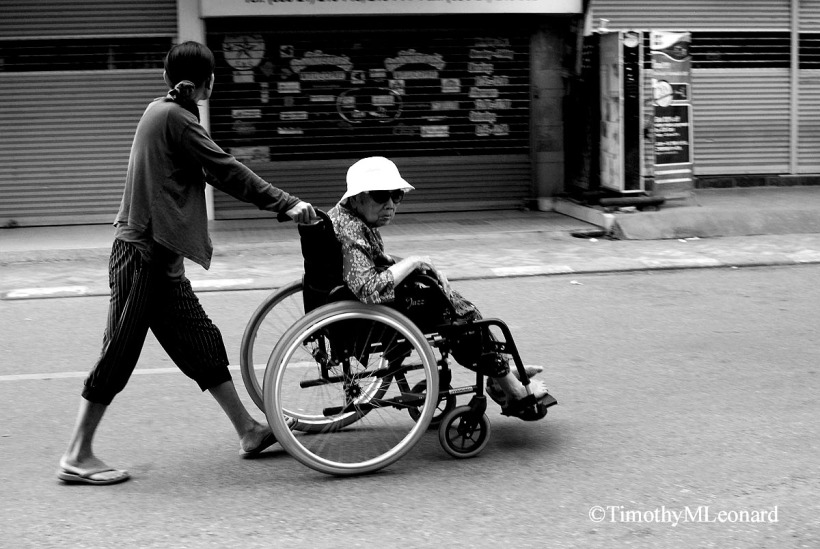






 Share Article
Share Article 